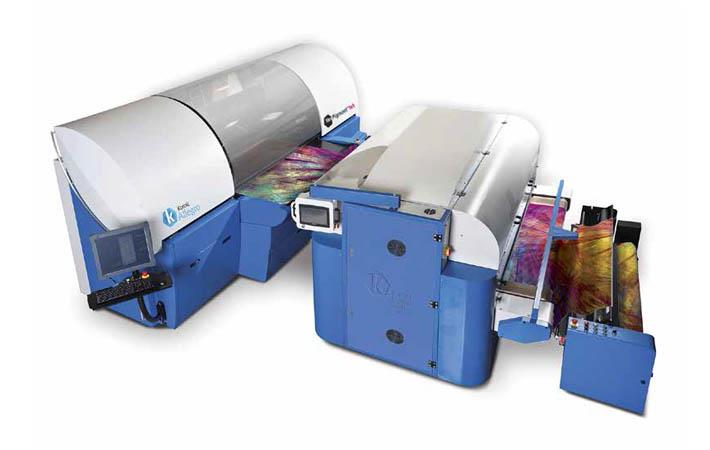'Customisation is an advantage of digital printing'

"The business models are changing. The other thing is that today companies are trying to reduce their inventory. So, when you manufacture a big amount of garments or fabric, you cannot be so sure that you can sell them out within a timeframe. Inventory itself costs. Therefore, people try to reduce their inventory. That's another reason to go in for customisation," Buck Kim, president for Asia-Pacific, Kornit Digital told Fibre2Fashion in an exclusive interview.
When asked if textile manufacturers are caught in a bind between customisation and mass production, Kim said, "Yes, but if you look at things from the demand point of view, the demand for mass production still remains. There is no doubt that as far as mass production is concerned, India remains big. But the market is also about demand."
"If you look at Zara or H&M, each design is probably there for only one week. They no longer produce for a whole season. You see a product in a shop today, and the next time you visit, it is gone. This is what is happening in the fashion world. As we visit India, a country known for mass production, seeing people going in for a different way of production is amazing," added Kim.
Printing machines by Kornit Digital are also environment-friendly as they curb water wastage, reduce power consumption and virtually eliminate pollution.
"If we speak of our roll-to-roll printers, just consider the other forms of printers and printing (both traditional, as also digital). There has to be both pre-treatment as well as post-treatment," informed Raymond Cheng, director of sales for Asia-Pacific, Kornit Digital.
"Given the technologies, they have to do steaming and washing after the printing has been done, so as to consolidate the ink, the sharpness, the brightness of the colours, and to wash out the chemicals off the fabric. For this, they need to use a lot of electricity as well as water. In our roll-to-roll machine (i.e. the Kornit Allegro), there is no need for a separate pre-treatment, which is done online. When you give the print command, it goes for automatic pre-treatment, together with the (water-based) ink," continued Cheng.
The printing process adopted by Kornit's roll-to-roll machine is clean and sustainable. It uses bio-degradable water based ink. Moreover, since no extra power is needed for the steaming and drying processes, this printing is energy-efficient as well. The entire facility and the area remain clean. Factors like water wastage, filtration or cleaning systems need not be taken into account if this type of machine is installed, added Cheng. (KD)
Click here to read the complete interview.
Fibre2Fashion News Desk – India
































-Ltd..jpg?tr=w-120,h-60,c-at_max,cm-pad_resize,bg-ffffff)





.jpg?tr=w-120,h-60,c-at_max,cm-pad_resize,bg-ffffff)
.jpg?tr=w-120,h-60,c-at_max,cm-pad_resize,bg-ffffff)






